Simulated Workload Performance Comparison¶
While the competitive performance comparison is useful for identifying strengths and weaknesses in the API, it doesn’t reflect the variable nature of real-life workloads. In August 2014, a survey of use cases for sorted list data types was made through repeated searches of Github. The analysis identified several common use patterns.
These benchmarks attempt to mimic the usage patterns observed in other projects. Those patterns are summarized in the following names:
Priority Queue – Represents a priority queue data structure. In addition to the normal add and pop routines that can be efficiently managed with the heapq module in the standard library, projects required the ability to test for list ownership of values and occasional removal. A common use case also involved iterating the entire priority queue. The recipe described in the Python docs is insufficient as a priority queue for these projects in two ways: not every inserted value corresponds to a unique key and sorted iteration is not supported in linear time.
Multiset – Represents a multiset data structure. While the collections.Counter data type is commonly suggested for implementing a multiset in Python, some projects required the ability to efficiently lookup the greatest or least item in the set.
Ranking – Represents those projects that repeatedly looked up the index of items in the sorted list. Sometimes this occurred as part of prioritizing elements and reporting their rank. Imagine trying to identify an element’s position in a work queue.
Neighbor – This pattern was observed in several implementations of machine-learning algorithms (e.g. K-nearest-neighbor search). An iterative process was applied to a set of values in which they were repeatedly bisected and occasionally iterated. The bisect process attempts to find the nearest values to a given one.
Intervals – Perhaps the most complex usage pattern, these projects maintained a list of intervals and were often querying a sorted list to determine those which overlapped. In addition to bisecting the list to identify nearest intervals, range queries were used to determine overlap. Frequent indexing was also apparent.
The performance of each benchmark is displayed below along with each of the other data types implementing the necessary operations. Before the benchmark begins, the list is populated with values and then corresponding to the list size, a number of operations are performed. Each workload has been reduced to a set of operations with associated frequencies. For example, the priority queue simulates add and pop each 40% of the time.
Though these workloads strive to be realistic, they are still quite synthetic. No attempt is made to exercise memory allocation or cache interference while sorted list operations are performed. The frequency of each operation is also estimated because no projects had performance benchmarks that were easily evaluated.
The legends of the graphs below correlate the underlying data structure used to the Python project. The correlation is as follows:
Data Structure |
Project |
|---|---|
B-Tree |
|
List |
Sorted List¶
Graphs comparing Sorted List performance.
Priority Queue¶
Simulates a Priority Queue workload as described above. The mix of operations and their frequencies:
40%
SortedList.add()40%
SortedList.pop()1%
SortedList.__iter__()(limited to first 100 elements)

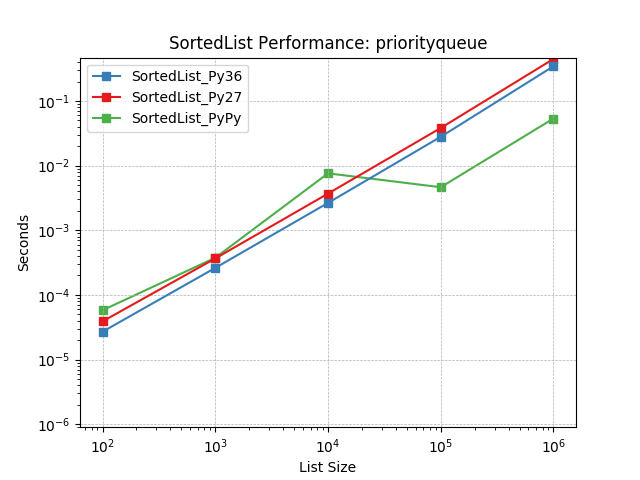
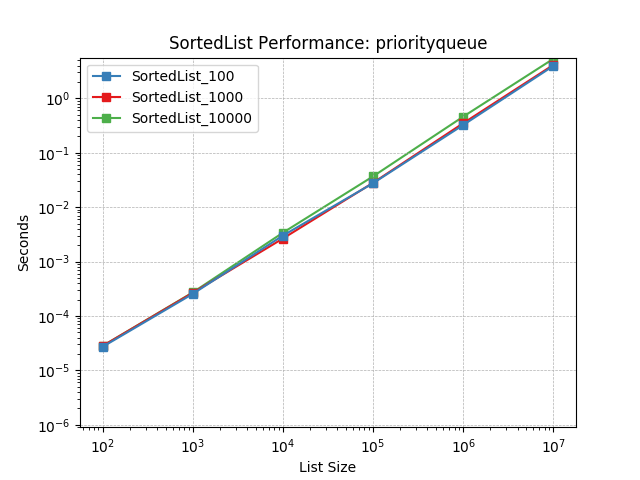
Multiset¶
Simulates a Multiset workload as described above. The mix of operations and their frequencies:
10%
SortedList.add()
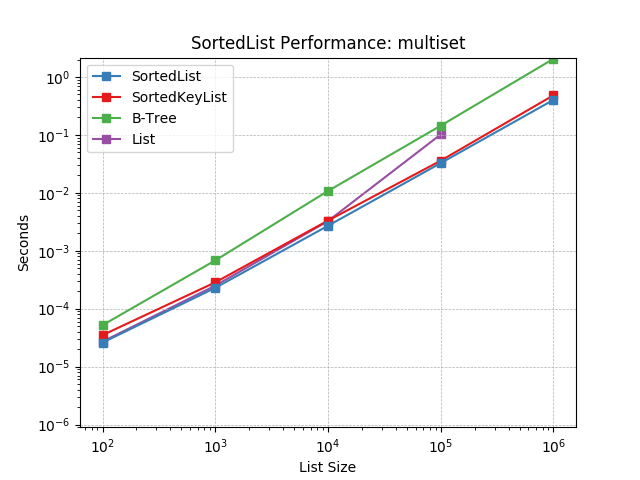
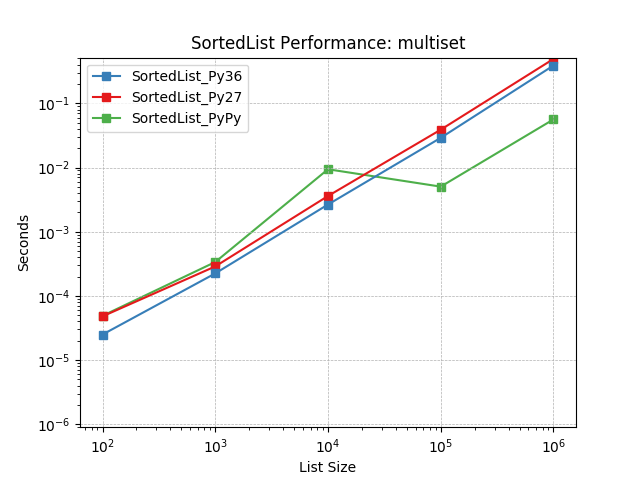
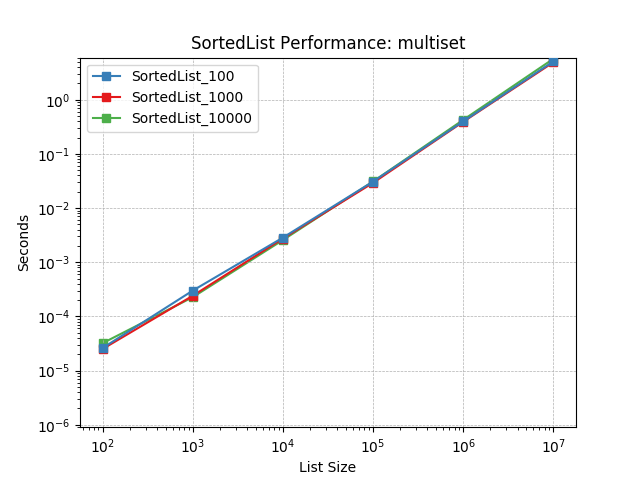
Ranking¶
Simulates a Ranking workload as described above. The mix of operations and their frequencies:
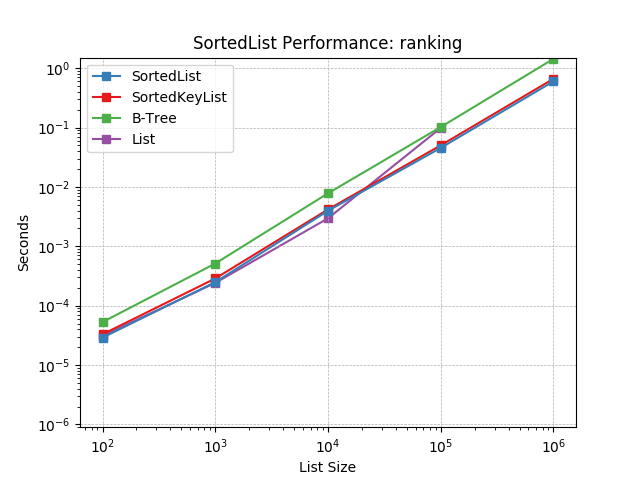
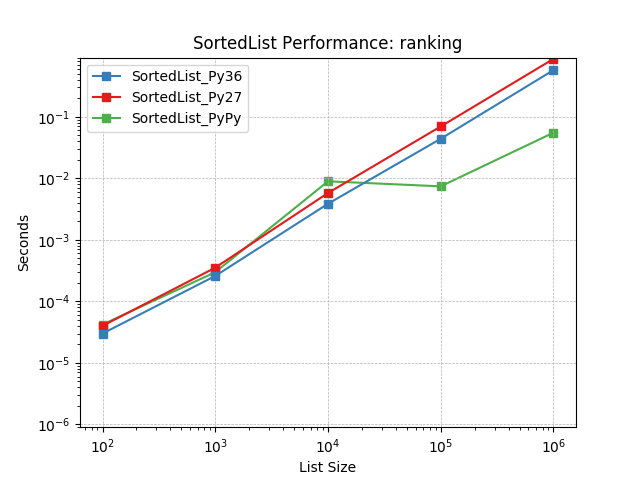
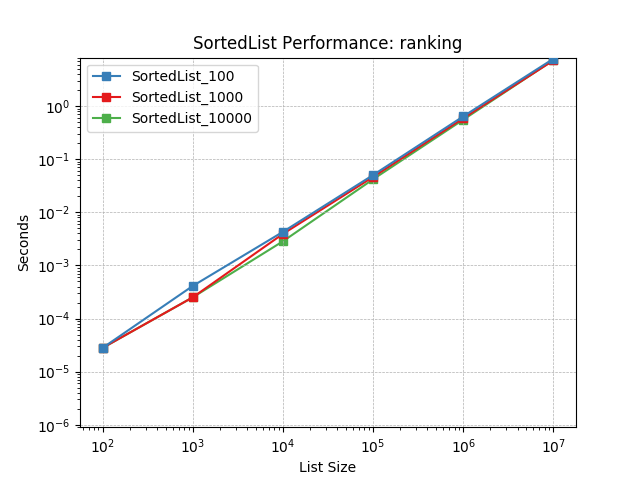
Neighbor¶
Simulates a Neighbor workload as described above. The mix of operations and their frequencies:
75%
SortedList.bisect()10%
SortedList.add()5%
SortedList.__iter__()(limited to first 100 elements)

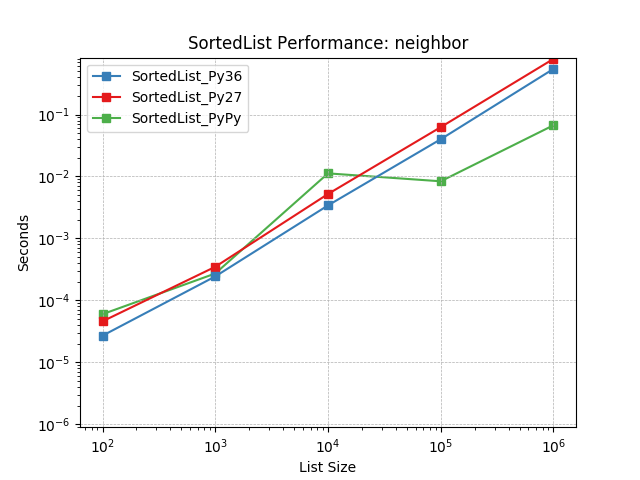
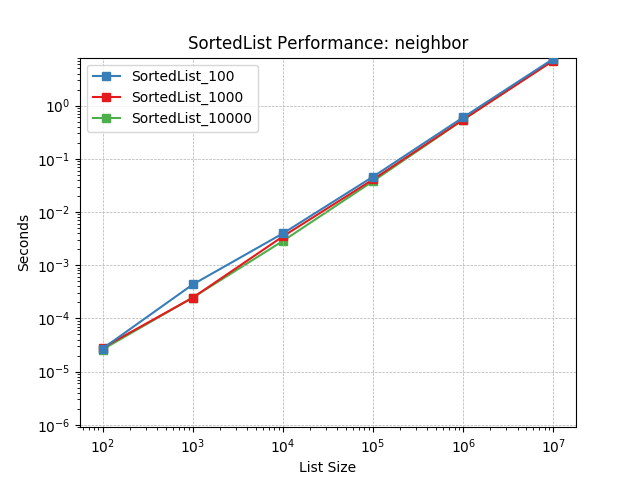
Intervals¶
Simulates an Intervals workload as described above. The mix of operations and their frequencies:
30%
SortedList.bisect()10%
SortedList.__getitem__()(range query)10%
SortedList.add()
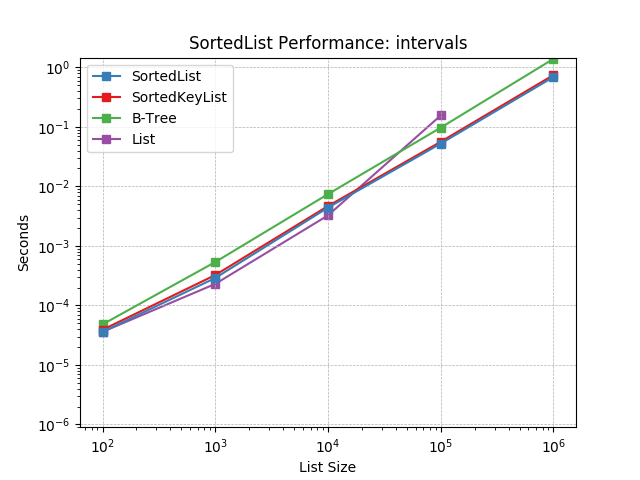
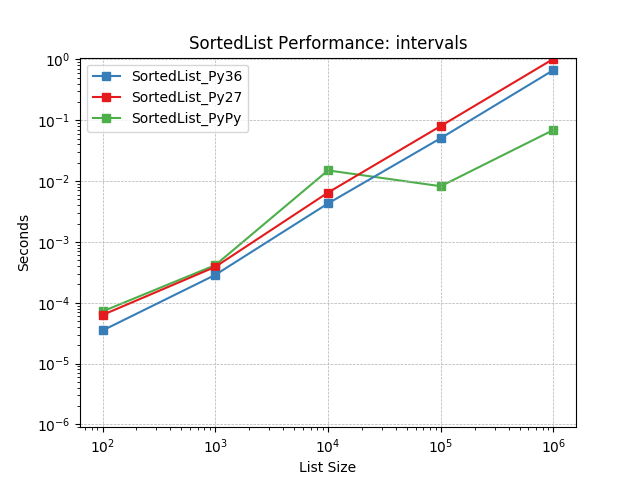
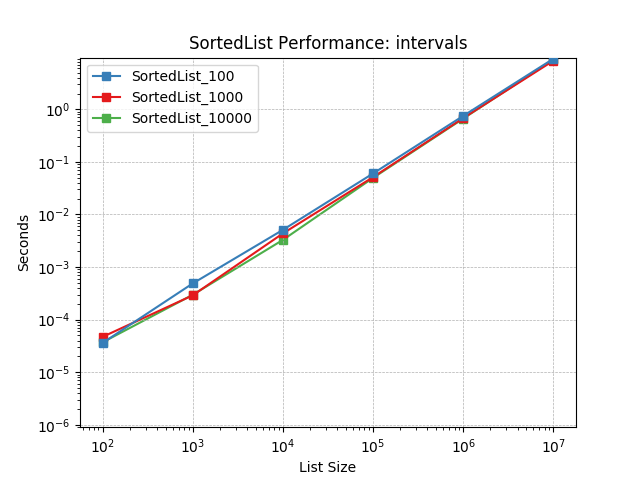
Other Performance Comparisons¶
Sorted Containers uses a segmented-list data structure similar to a B-tree limited to two levels of nodes. As part of the implementation, a load factor is used to determine how many values should be stored in each node. This can have a significant impact on performance and a load factor performance comparison is also provided.
Because Sorted Containers is pure-Python, its performance also depends directly on the Python runtime. A runtime performance comparison is also included with data from popular Python runtimes.
